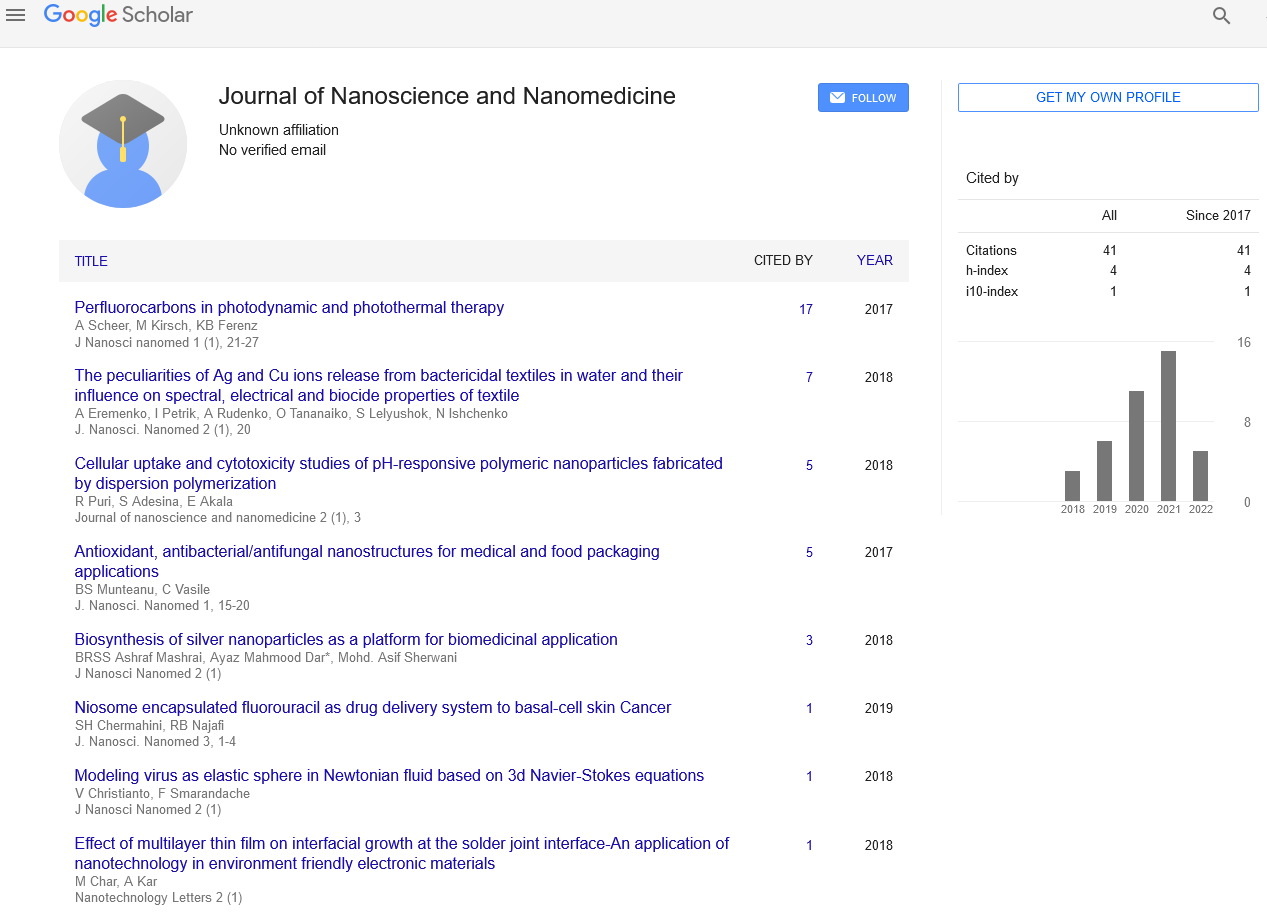Short Study on Novel Nanodrug Related Nanobiopharmaceutical Agents
Received: 22-Oct-2020 Accepted Date: Oct 24, 2020; Published: 12-Nov-2020
This open-access article is distributed under the terms of the Creative Commons Attribution Non-Commercial License (CC BY-NC) (http://creativecommons.org/licenses/by-nc/4.0/), which permits reuse, distribution and reproduction of the article, provided that the original work is properly cited and the reuse is restricted to noncommercial purposes. For commercial reuse, contact reprints@pulsus.com
A tool that applicable in a field of medicine with the help of nanotechnology and its capacity to prevent treat and cure a disease is called Nanomedicine. The usage of Nanomaterials such as biocompatible nanoparticles based on nanoscale materials and involve nanorobots for diagnosis, monitoring, control the spread of diseases in living organism. Nanotechnology is a branch of nanoscience and nanomedicine and it is applicable and used in different developing countries for the purpose of treating serious health issues. Nanotechnology mainly applicable to a variety of industrial and purification processes. Nanotechnology based research in medicine is currently being developed involve based on employing nanoparticles on drugs to deliver, heat, light, or other substances to specific types of cells such as cancer cells. The use of nanotechnology in drug delivery is under the development for the use of nanoparticles to deliver drugs to cancer cells. Particles are engineered so that they are attracted to diseased cells, which allows direct treatment of those cells. Pharmaceuticals include a verity of pharma particle such as chemicals, drugs, medications, injectables, dispensaries, tablets, capsules etc and many more this can be used for all the living organisms. The Pharmaceuticals which are derived from nano substances that are referred as Nano pharmaceuticals.
Nano pharmaceuticals are relatively new class of therapeutic-containing nanomaterials that often have unique " nano properties" with physiochemical properties and due to their small size when compared with their bulk-phase counterparts and a high surface-to-volume ratio and the possibility of modulating their properties. The nonpharmaceutical that linked with different drug substances and to form a new nanosubstance that helps in treating some invisible organisms and microbes present in the day to day life. The drugs that are derived from the various chemical substances and which are related to the nanosubstance’s to from a unique and minute substance named as nanodrugs. Nanodrugs are the drugs that can be derived with the help of nanomedicine with its own particle size. There are various types of nanodrug systems mainly designed with the help of drugs and are encapsulated in a carrier form, for e.g., dendrimers, liposomes, micelles, and polymeric nanoparticles. A nanodrug consists of several pharmacokinetic advantages, such as specific drug delivery, high metabolic stability, high membrane permeability, improved bioavailability, and long duration of action.
Therefore, the nanodrugs can helps in altering the biopharmaceutic and pharmacokinetic properties of new drugs and its systems. The Nanodrug system can be a promising approach to obtain the drug properties. Coming to the physicochemical properties of nanodrug substances, such as size, surface charge, and its hydrophobicity and smaller nanodrugs show higher transcellular uptake via follicle-associated epithelia and then to do larger ones. Nanoparticles with its size and shape that can enter cells via endocytotic, potocytosis, pinocytosis, and patocytosis. In contrast with these larger particles can be removed from the bloodstream via the macrophages of the reticuloendothelial system.
Nanodrugs having a positive surface charge which can directly interact with the negative charges with sulfate sialic acid and sugar moieties, this results in enhanced transportation and increases its capacity by their epithelial cells. This can act as membrane permeation enhancers or also called as a ligands for this receptors that the nanodrugs can expressed on the cellular membrane and that to promote the transcellular transport of the entrapped drug and its substances.
However, these drugs are related to nano biopharmaceutical agents and their particles which must be praised for their advantageous drug delivery properties and several diseases like lung, skin, and other cells with the translocation of epithelial cells. Thus, the nanodrug approach the nanomedical substances and their particles which should enhance the therapeutic potential of entrapped drugs and contribute to the acceleration of pharmaceutical development. Such Nanodrug approaches might conclude that they resolve the biopharmaceutical problems related to imprecise control of drug release, poor stability, limited pharmacokinetic behaviour, and toxicity of the active ingredient.





